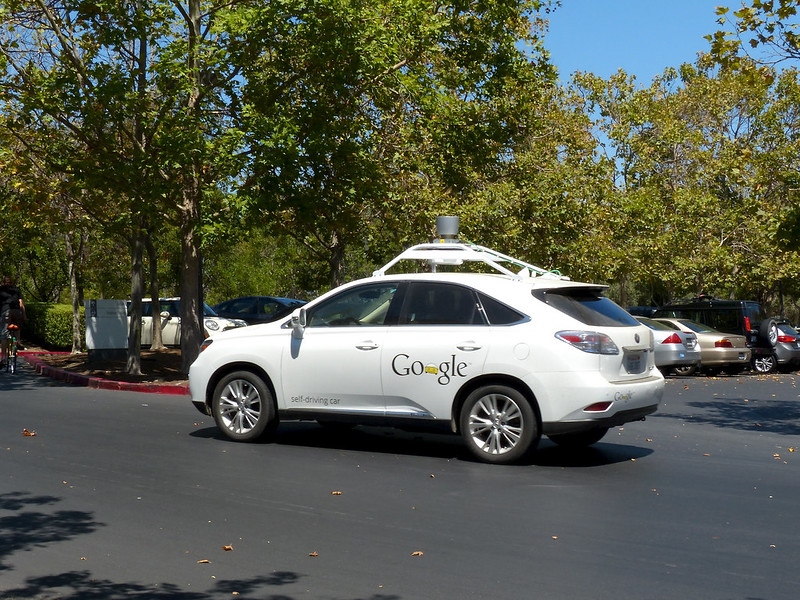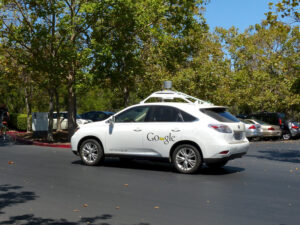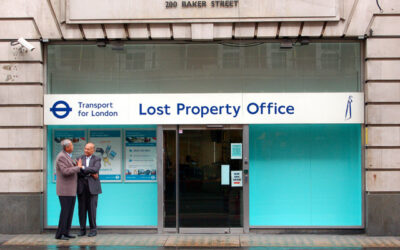
[Image: “Google Self-Driving Car” by *rboed* is licensed under CC BY 2.0 ]
A joint report from the Law Commission of England and Wales and the Scottish Law Commission has been published. The topic is automated vehicles and makes recommendations for the safe and responsible introduction of self-driving vehicles.
The Law Commission is the statutory independent body created to keep the law under review and to recommend reform where needed.
Why was the report needed?
The Scottish Law Commissioner questioned how the law should deal with self-driving technologies. According to the Public Law Commissioner, there was an opportunity to promote public acceptance of automated vehicles and make recommendations on safety assurance and clarify legal liability.
The report recommends the introduction of new legislation regulating automated vehicles with a clear distinction between features that assist drivers and those that are self-driving.
As automated vehicles develop it could mean a vehicle could drive without human intervention. The legal consequences of such a development are huge. The human in the driver seat would not be the main focus of accountability for road safety. This would lead to a need for new systems of safety assurance, and the report recommends this is implemented by a new Automated Vehicle Act to set out new regulatory regimes and “new legal actors”.
Key recommendations
1. Write a test for self-driving into the law – a clear line to be drawn to distinguish self-drive from driver support features; a transparent process for setting a safety standard; and also new offences to prevent misleading marketing.
2. An approval and authorisation process would be built on the current domestic and international technical vehicle approval scheme. A new second stage would be added to authorise vehicles for use as self-driving on GB roads.
3. A safety assurance scheme to be introduced to provide regulatory oversight throughout the lifetime of an automated vehicle to ensure they are safe and continue to comply with road rules.
4. Legal roles to be brought in for users, manufacturers, and service operators. Criminal responsibility for the person in the passenger seat will be removed.
5. Manufacturers and service operators will be held criminally responsible for misrepresentation or non-disclosure of safety-relevant information.
What are AVs?
AVs is the term used to refer to automated vehicles. The vehicles can also be called autonomous vehicles or driverless cars. They can drive themselves without being controlled or monitored by an individual for at least part of the journey.
The difference between driver support and self-driving is that the former is available to help the driver. An example of driver support would be assistance to maintain a safe distance from the driver in front.
It is anticipated that in the future the driver support features will develop to the point that a vehicle will be able to drive itself, without human intervention.
What is self-driving?
The term is used in the report to indicate a legal threshold. If a vehicle is described as having a self-drive ADS (automated driving system) feature, and that feature is engaged, the person in the driving seat is not responsible for the dynamic driving task. A clear distinction is required to set out when a person is no longer responsible for the dynamic driving task. The ADS is responsible for monitoring the driving environment and responding to events; the person in the driving seat (if there is one) may relax and divert their attention knowing the ADS is engaged.
It will be an offence to describe a feature as “self-driving” if it has not been authorised.
Authorisation scheme
The authorisation scheme will decide whether any ADS feature is self-driving or not.
Accountability
Once a vehicle is authorised as having self-driving ADS features, the system of legal accountability will change:
1. The person in the driving seat will become a “user-in-charge” and have immunity from a wide range of offences. The person will retain other driver duties such as arranging insurance and checking loads.
2. A vehicle will be backed by an Authorised Self-Driving Entity (ASDE). If the vehicle is caused to drive in a criminal way by the ADS feature, it would be dealt with as a regulatory matter. The issue would be between the in-use regulator and the ASDE. The emphasis would be on understanding the issue and learning from it.
3. “No user-in-charge” (NUIC) features are a reference to the ADS features that may be authorised without a user-in-charge. Anyone in the vehicle would be a passenger only. The responsibility for overseeing the journey would be with a licensed NUIC operator.
4. In respect of civil liability, the provisions of the Automated and Electric Vehicles Act 2018 will apply. The insurance company will compensate the victim directly without the need for the victim to prove anyone was at fault.
How can we help?
We ensure we keep up to date with any changes in legislation and case law so that we are always best placed to advise you properly. If you would like to discuss any aspect of your case, please contact any member of our vastly experienced Criminal Defence team, for assistance with any criminal law related matter.
–
Mr John Stokes (John.Stokes@danielwoodman.co.uk),
Mr Anthony Pearce (Anthony.Pearce@danielwoodman.co.uk) or
Mr Daniel Woodman (Daniel.Woodman@danielwoodman.co.uk).










